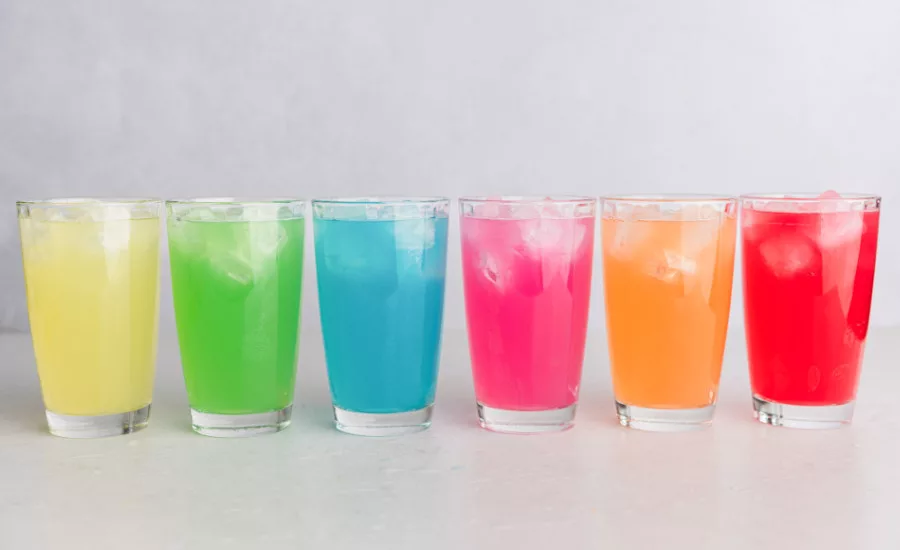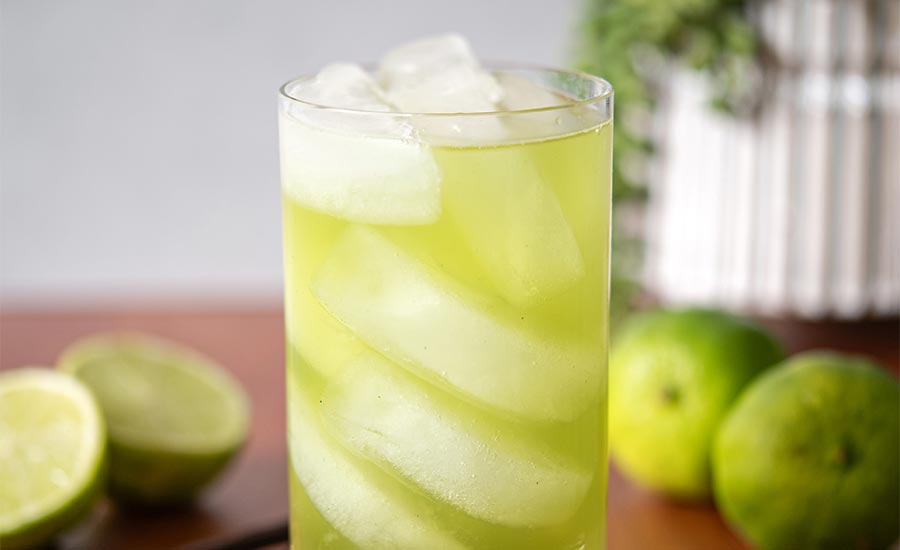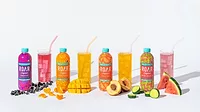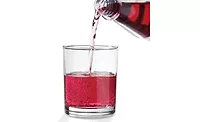Consumer expectations put clean label at the forefront
Interest prompts innovation, education from suppliers, beverage manufacturers

Image courtesy of GNT USA LLC
Advancements in data collection have offered businesses and even athletics greater insight into determining areas for improvements based on baseline metrics. However, when determining consumer sentiment or in-demand product attributes, it might be hard to define a clear baseline. But as better-for-you trends proliferate, the baseline for consumer packaged goods (CPG) is becoming more clearly defined.
“Consumer demand for clean label and non-GMO products continues to grow — and it’s not just a trend, it’s the new baseline,” says Kash Rocheleau, CEO at Icon Foods, Portland, Ore. “Today’s shoppers, especially Millennials and Gen Z, want to know what they’re putting into their bodies. They’re reading ingredient decks, avoiding artificial anything, and leaning into brands that prioritize transparency and simplicity.
“Clean label products that read like a recipe, not a lab report, are winning trust — and shelf space,” she continues. “Non-GMO has also become a proxy for ‘better for you,’ even if most consumers can’t explain the science behind it. Perception matters, and right now, it’s driving behavior.”
Ravi Arora, sales and marketing director at Global Organics, Cambridge, Mass., also highlights clean label’s position within consumable CPG markets.
“Consumer interest in clean label and non-GMO products continues to surge, driven by a growing demand for transparency, wellness, and ingredient simplicity,” he says. “Clean label has evolved beyond just a trend — it’s now a core expectation, particularly in the beverage category.
“According to the Innova Top Trends Survey 2025, clean label is the No. 1 trend influencing food and beverage development,” Arora continues. “Nearly one in three consumers report that health and well-being is their top spending priority, fueling the shift toward beverages that support vitality, healthy aging, and overall wellness.”

Emily Berg, marketing manager for beverages at Cargill, Minneapolis, notes that consumer purchase decisions are being influenced by ingredient lists.
“Our proprietary consumer research finds scrutiny of ingredient lists continues to intensify, with 67% of shoppers now saying they are extremely or very likely to check lists before buying,” she says. “That’s up 2 points from the previous year and marks the third consecutive increase.
“Ingredient avoidance remains the key driver of consumers’ scrutiny, but interest in seeking specific ingredients is closing the gap,” Berg continues. “While 63% of consumers say they check lists to avoid certain ingredients, nearly half (48%) report they’re looking for particular ingredients.”
Across varying demographics, Cargill’s research shows consumers are leaning into natural.
“This is especially apparent as interest in avoiding artificial ingredients continues to grow,” Berg says. “In our latest survey, one in five consumers (19%) stated they avoid artificial sweeteners, up 2 points from the previous year. Avoidance of other artificial ingredients, including dyes, is even higher. A third of consumers say they avoid these ingredients, up 9 points in the last year.”
Alice Lee, technical marketing manager at GNT USA LLC, Dallas, N.C., explains that clean label has been a motivator for consumers, but has been elevated thanks to increased coverage and education as of late.
“Clean label has become a key driver of purchase decisions across food and beverage categories,” Lee says. “There’s been a huge spike in consumer interest around what certain ingredients are, why they’re used, and what we should be putting into our bodies.
“The media coverage around ultra-processed products has been intensifying, and shoppers have more access to information than ever in the digital age,” she continues. “As they become more educated, they’re increasingly seeking out products with clean, natural, recognizable ingredients.”
Authentic solutions
With clean, natural solutions motivating today’s consumer purchases, beverage-makers have a range of ingredient solutions to support this need state.

GNT’s Lee explains that the market has seen a general trend toward removing synthetic additives, particularly colors and preservatives.
“While the clean-label trend has been building steadily, recent regulatory developments are now acting as a catalyst,” Lee says. “The FDA and Department of Health and Human Services announced in April that they intend to eliminate all FD&C dyes. This obviously presents a challenge for manufacturers, but it’s also an opportunity to reset expectations, re-evaluate formulations, and align more deeply with evolving consumer priorities.
“Brands can take a more holistic approach to color reformulation — considering how natural colors, ingredients and storytelling work together to enhance consumer appeal,” she continues. “The shift invites innovation across the entire recipe, allowing manufacturers to create more authentic, clean-label beverages that not only meet compliance requirements but also build stronger emotional connections with their audiences.”
To support these shifts, GNT offers its EXBERRY colors made from non-GMO fruits, vegetables and plants.
“We use more than 30 different raw materials and they can be used to achieve a complete spectrum of bright shades,” Lee says. “For example, carrots, sweet potatoes, and blueberries can provide vibrant reds, oranges, and purples. We use the superfood spirulina to achieve blues and have developed a patented technology to allow it to remain stable in beverage applications, even under challenging conditions like low pH or pasteurization. Spirulina can also be combined with yellows such as turmeric or algal carotenes for green shades.”
Global Organics’ Arora highlights the emphasis placed on functional ingredients that boast a clean label perception.
“Beverage-makers are embracing clean label innovation by formulating with fewer and more functional ingredients — and ensuring those ingredients are easily understood by consumers,” Arora says. “There is a surge in demand for naturally functional beverages, including cactus water, coconut water and birch water, which provide enhanced hydration and essential minerals. Collagen waters are gaining popularity for their perceived skin and joint health benefits.
“Additionally, botanical- or adaptogen-infused drinks — such as those containing ashwagandha, mushrooms or tulsi — are sought after for their ability to reduce stress and boost vitality,” he continues. “Probiotic and prebiotic waters are also emerging as clean options to support gut health.”
Arora explains that Global Organics offers certified organic ingredients, natural colorants and alternative sweeteners to support these trends.
“Our rigorous quality assurance program includes third-party food safety audits, site inspections and accredited lab testing to validate the absence of pesticides and adherence to organic standards,” he says. “This approach ensures that beverage-makers can confidently meet consumer expectations for clean and safe products.”
Icon Foods’ Rocheleau adds that the use of clean label ingredients for functional beverages can be seen in a host of products, including hydration, energy, gut health as well as immunity.
“We’re seeing momentum behind enhanced waters, probiotic sodas, kombuchas and plant-based protein drinks — especially those that ditch artificial colors, preservatives and synthetic sweeteners,” she says. “Ready-to-drink teas and coffees formulated with stevia or monk fruit are also on the rise, positioned as cleaner alternatives to their traditional counterparts.
“The takeaway; consumers are gravitating toward brands that blend functionality with transparency and taste,” Rocheleau continues. “It's no longer just about cutting sugar — it’s about creating something they feel good about drinking every day.”
Beyond function and color, though, sweetener solutions that support clean label trends also have a high interest from formulators.
“On the sweetener front, stevia is a clear winner,” Cargill’s Berg says. “While artificial sweeteners continue to score low in our proprietary research, stevia enjoys broad acceptance. Cargill’s stevia portfolio includes Truvia and ViaTech stevia leaf extracts, as well as EverSweet stevia sweetener, and it’s backed by experts who can help developers build the best sweetening solution for their unique sugar-reduction needs.”
Icon Foods’ Rocheleau also points to natural sweeteners proliferation as consumers turn to clean label.
“We’re seeing a major lean into natural sweeteners like stevia (especially Reb M) and monk fruit — both are non-GMO, plant-based, and deliver the sweetness consumers want without the baggage of added sugars or artificial aftertastes,” she says.
Rocheleau also calls attention to the opportunity that soluble fiber can offer in terms of clean label as well as other in-demand product attributes.
“They’re also turning to soluble fibers like tapioca fiber and inulin to support gut health and improve mouthfeel,” she says. “These ingredients offer subtle sweetness and can help brands reduce sugar without compromising texture or flavor.
“And when you combine a functional fiber — for gut health claims and that creamy mouthfeel — with a high-intensity sweetener like Reb M or monk fruit that’s when the magic happens,” Rocheleau continues. “You get clean label, sugar reduction, and functionality all in one sip.”
Cargill’s Berg also touches upon the importance of maintaining texture expectations when developing clean label beverages.
“Beyond sweetness, texture and mouthfeel matter, too,” she says. “Hydrocolloids often star in these roles, but many come with unfamiliar names. Among the hydrocolloids included in our annual ingredient survey, pectin earns top scores for familiarity and health perception. Over half of consumers report they are very or somewhat familiar with the ingredient.”
Different strokes for different folks
As formulators look to craft clean label beverages for consumers, experts explain that varying definitions amongst shoppers can limit engagement. Because of this, clarity and education will be vital for manufacturers.
“One of the biggest misconceptions is that ‘clean label’ means the same thing to all consumers — or that it applies equally across all beverage categories,” Cargill’s Berg says. “In reality, label expectations vary widely. For a nutritional beverage, label expectations may be non-negotiable, but they may have different standards for a carbonated beverage.”
Global Organics’ Arora highlights the various terms that can at times confuse consumers and how beverage-makers can avoid that confusion.
“Clean label can be ambiguous because there is no formal regulation defining the term,” he says. “This often leads to consumer confusion. Many assume that the word ‘natural’ is synonymous with ‘clean,’ or they struggle to differentiate between ‘non-GMO’ and ‘organic.’ Others may believe that fewer ingredients automatically mean a healthier or cleaner product, without accounting for the quality or processing of those ingredients.
“From a Global Organics perspective, consumer education is key,” Arora continues. “Clean label should emphasize ingredient simplicity, minimal processing, ethical sourcing and transparent labeling. Packaging and marketing efforts should clearly communicate what makes a product clean — especially when using terms like ‘non-GMO,’ ‘free from,’ or ‘sustainably sourced.’”
GNT’s Lee adds that because clean label and natural have no legal definition, it is important for brand owners to communicate clearly to consumers.
“Our plant-based colors can be described on the label in a way that’s easy to understand, such as ‘fruit and vegetable juice for color’ or ‘spirulina extract (color),’” she says. “Brands can also use front-of-pack logos saying their beverages are ‘colored with fruits and vegetables’ and can even use storytelling on packaging or websites to explain how the colors are made.”
Beyond the different interpretations of clean label amongst consumers and the need for clarity, Icon Foods’ Rocheleau explains that functional ingredients also require explanation to consumers.
“When you include ingredients like erythritol or soluble tapioca fiber, it’s important to tell the story behind them,” Rocheleau says. “These are naturally derived, well-researched ingredients that bring real value — like reducing sugar, supporting gut health, or improving texture and stability. But if consumers don’t recognize them or understand their benefits, they may hesitate.
“Clarifying clean label starts with transparency and education,” she continues. “If you’re using monk fruit or Reb M, explain what it is and why you chose it. If you're using a prebiotic fiber like soluble tapioca fiber, highlight that it comes from cassava and supports digestive wellness. Consumers want to feel confident in what they’re putting in their bodies. The more we explain our choices, the more trust — and loyalty — we earn.”
Although clean label is a driving force in beverage manufacturing, to keep this momentum going, education will play a greater role in the years to come.
Looking for a reprint of this article?
From high-res PDFs to custom plaques, order your copy today!






